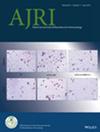Body Fat Distribution and Glucose Homeostasis Is Affected by Perinatal Exposure to High Dietary Advanced Glycation End Products (AGEs) in Male Offspring
Abstract
Problem
Exposures during the perinatal period, a phase of rapid development and growth, may have a profound and sustained effect on metabolic disturbances later in life. The pro-inflammatory advanced glycation end products (AGEs) are widely consumed in the Western diet. The purpose of this study was to determine whether perinatal exposure to these dietary AGEs alters metabolic parameters, in particular adiposity and glucose hemostasis, in male mice offspring.
Methods
Seven-week-old female CD1 mice were placed before mating and then throughout pregnancy and lactation on either a low AGE (L-AGE; n = 13) or high AGE (H-AGE; n = 13) diet. All offspring in both groups were weaned postnatal day 21 onto normal diet and studied through to 21 weeks of age. The offspring were counted and weighed weekly, starting at birth until 21 weeks of age, to assess the growth curve. At the time of sacrifice, Echo MRI was performed to measure adiposity and to record liver, white epididymal adipose tissue (WAT), and inguinal fat weights. Serum levels of leptin as well as insulin and glucose tolerance tests (ITT and GTT) were compared.
Results
The Body weight at birth of offspring of dams that were on H-AGE diet was significantly lower compared to the body weight of offspring of dams that were on L-AGE diet. Echo MRI data showed that the offspring of dams that were H-AGE diet had significantly lower fat mass, lower epididymal WAT fat weight, and lower inguinal fat weight but higher lean body mass and similar liver weight. They also had significantly higher glucose levels during GTT and ITT, as well as significantly lower serum leptin levels compared to the offspring of dams that were on the L-AGE diet.
Conclusions
These results indicate that perinatal exposure to a maternal diet elevated in AGEs causes deficits in perinatal growth and impairment in glucose hemostasis in male mice. These findings suggest that AGEs may represent an important new class of mediators of adiposity and the metabolic syndrome.

 求助内容:
求助内容: 应助结果提醒方式:
应助结果提醒方式:


